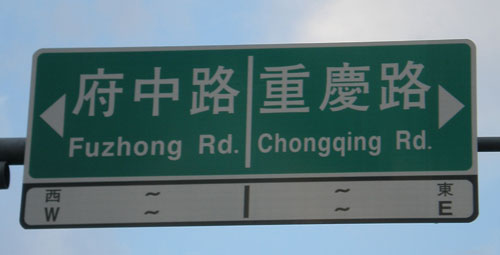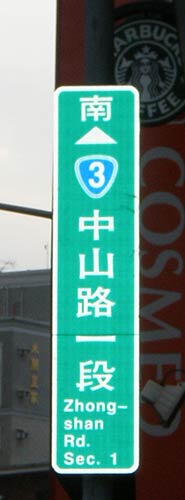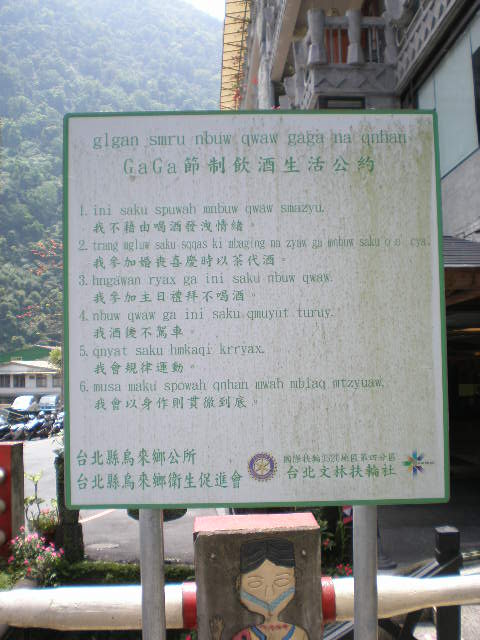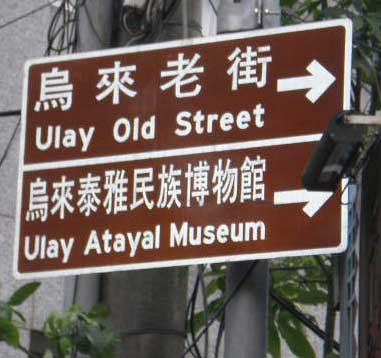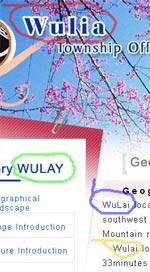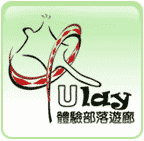In December Taiwan will be getting a new city. In fact, it will be the most populous city in the entire country: Xīnběi Shì (新北市).
For those not familiar with the situation, I should perhaps give a bit of background. Taiwan won’t suddenly have more people or buildings. Instead, the area known as Taipei County (which does not include the city of Taipei but which occupies a much greater area than Taipei and has a much greater total population) will be getting a long-overdue official upgrade to a “special municipality,” which means that it will get a lot more money and civil servants per capita from the central government. And as such the area will be dubbed a city, even though in appearance and demographic patterns it isn’t really a city at all but still a county containing several cities (which are to become “districts” despite having hundreds of thousands more inhabitants than some other places labeled “cities”), lots of towns, and plenty of empty countryside.
The Mandarin name will change from Táiběi Xiàn to Xīnběi Shì. (Xīn is the Mandarin word for “new.” Xiàn is “county.” Shì is “city.” And běi is “north.”)The official so-called English name is, tentatively, “Xinbei City.” Hanyu Pinyin! Yea!
Talking about “English” names is often misleading, since many people conflate English and romanization of Mandarin; and the usual pattern of Taiwanese place names not written in Chinese characters tends to be MANDARIN PROPER NAME + ENGLISH CATEGORY (e.g., “Taoyuan County”). So, at least in this post, I’m going to be a bit sloppy about what I’m calling “English.” Forgive me. OK, now back to the subject.
A couple of days ago, however, both major candidates for the powerful position of running the area currently known as Taipei County (Táiběi Xiàn) had a rare bit of agreement: both expressed a preference for using “New Taipei City” instead of “Xinbei City.” Ugh.
And to top things off, a couple dozen pro-Tongyong Pinyin protesters were outside Taipei County Hall the same day to protest against using Xinbei because it contains what they characterize as China’s demon letter X. Actually, that last part of hyperbole isn’t all that much of an exaggeration of their position. The X makes it look like the city is being crossed out, some of the protesters claimed.
This is, of course, stupid. But unfortunately it’s the sort of stupidity that sometimes plays well here, given how this is a country that pandered to the superstitious by removing 4′s from license plate numbers and ID cards and by changing the name of a subway line because if you cherry-picked from its syllables you could come up with a nickname that might remind people of a term for cheating in mah-jongg (májiàng). (Why bother with letting competent engineers do things the way they need to be done when problems can be fixed magically through attempts to eliminate puns!)

The protesters would prefer the Tongyong form, Sinbei. I suspect foreigners here would rapidly change that to the English name “Sin City,” which I must admit would have a certain ring to it and might even be a tourist draw. Still, Tongyong has already done enough damage. Those wanting to promote Taiwan’s identity would be much better off channeling their energy into projects that might actually be useful to their cause.
The reason the government selected “Xinbei City” is that “New Taipei City” would be too similar to “Taipei City,” according to the head of the Taipei County Government’s Department of Civil Affairs. And, yes, they would be too similar. Also, Xinbei is simply the correct form in Hanyu Pinyin, which is Taiwan’s (and Taipei County’s) official romanization system. It would also be be much better still to omit “city” altogether.
Consider how this might work on signs, keeping in mind that Taipei and Xīnběi Shì are right next to each other. So such similar names as “New Taipei City” and “Taipei City” would run the risk of confusion, unlike, say, the case of New Jersey and Jersey. I wonder if the candidates for mayor of Xinbei are under the impression that they should change the name of the town across from Danshui from Bālǐ to something else because visitors to Taiwan might otherwise think they could drive to the Indonesian island of Bali from northern Taiwan.
They probably said they liked “New Taipei City” better because it sounds “more English” to them. And it is more English than “Xinbei.” But that’s not a good thing.
Once again it may be necessary to point out what ought to be obvious: The reason so-called English place names are needed is not because foreigners need places to have names in the English language. If it were, I suppose we could redub many places with appropriate names in real English: “Ugly Dump Filled With Concrete Buildings” (with numbers appended so the many possibilities could be distinguished from each other), “Nuclear Waste Depository,” “Armpit of Taiwan,” “Beautiful Little Town that Turns Into a Tourist Hell on Weekends,” etc. The possibilities are endless, though perhaps some of the nicer places would need to be given awful names — following the Iceland/Greenland model — lest they be overrun. The problem is that Chinese characters are too damn hard, and people who can’t read them (i.e., most foreign residents and tourists) need to be able to find places on maps, on Web pages, through signs, etc. And they need to be able to communicate through speech with people in Taiwan about places. Having two different names — the Mandarin one and the so-called English one — is just confusing. Having one name in Mandarin written in two systems (Chinese characters and romanization), however, makes sense and works best. (If Taiwan were to switch to using Taiwanese instead of Mandarin, that would be a whole ‘nother kettle of fish.)
But things that make sense and politicians don’t often fit well together.
Consider the signs. What a @#$% mess this could be. Let’s compare a few ramifications of using Xinbei and Taipei vs. using New Taipei City and Taipei City.
Xinbei and Taipei.
- basically no chance of confusing one with the other
- short (6 characters each), thus fitting better on signs
- preexisting “Taipei [City]” signs wouldn’t have to be changed
- Xinbei would be the correct romanization and not repeat the misleading pei of bastardized Wade-Giles
- definitely no need to add “city” to either name, because there would be no “Taipei County” that might need to be distinguished from the city of Taipei, nor would there be a “Xinbei County” that would need to be distinguished from the city of Xinbei
Now let’s look at the case of New Taipei City and Taipei City.
- relatively easy to confuse at a glance
- relatively easy to confuse in general
- long, and don’t fit as easily on signs (“New Taipei City” = 15 characters, including spaces; “Taipei City” = 11 characters, including the space)
- “New Taipei City” would continue to ill-advised and outdated practice of using bastardized Wade-Giles spellings
- any time the common adjective new needs to be applied to something dealing with “New Taipei City” or “Taipei City” the chances for confusion and mistakes would increase even more, esp. in headlines
- the worst choice
The Taipei County Council will determine the final version of the name in September.
sources:
- Xīnběi Shì yìmíng — Cài Yīngwén, Zhū Lìlún jiē rèntóng New Taipei City (新北市譯名 英倫皆認同New Taipei City), June 24, 2010
- Taipei County’s new name triggers dispute, Taipei Times, June 25, 2010
- Xīnběi Shì Yīngyì? Cài Yīngwén: wǒ xǐhuan New Taipei City (新北市英譯?蔡英文:我喜歡NEW TAIPEI CITY), June 24, 2010
- Xīnběi Shì Yīngyì míng huà X — mínjiān bùmǎn (新北市英譯名畫X 民間不滿), Sina, June 24, 2010
See also
- The naming of “New North City”, David on Formosa, June 25, 2010
(By the way, if any Taiwan reporters want to pick up on this blog post, please don’t just follow the usual practice here of simply asking one or two random foreigners if they think the name “New Taipei City” sounds OK, so then you conclude that there’s no problem. Try to get people who’ve actually thought about the situation for more than a few seconds and who could give you an informed opinion. My apologies to those reporters who of course know better.)

